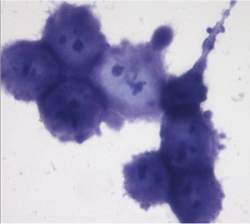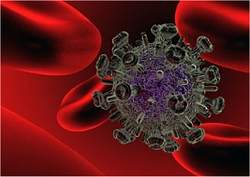Chaveamento cerebral
Os praticantes de meditação costumam dizer que o cérebro destreinado parece um macaco pulando de galho em galho, onde cada galho é uma ideia diferente.
Agora, cientistas determinaram que esse macaco pode saltar entre 8 galhos diferentes por segundo.
A equipe da Universidade Norueguesa de Ciência e do Instituto de Tecnologia de Kavli fizeram medições precisas para descobrir que o cérebro humano é capaz de alternar entre diferentes memórias até 8 vezes por segundo.
Memória quântica
Segundo a equipe, a memória pode ser dividida em "pacotes" individuais, assim como a luz pode ser dividida em "quanta" - porções discretas de luz, que se comportam como se fossem partículas, chamadas fótons.
No caso da memória humana, o que nos parece ser um fluxo contínuo é, segundo eles, igualmente formado por porções individuais de memória.
Segundo suas medições, cada quantum de memória humana dura 125 milissegundos.
"O cérebro nunca mistura memórias diferentes, mesmo quando você parece perceber que isso está acontecendo. Isto ocorre por causa do processo que está acontecendo dentro da sua cabeça, com o cérebro tentando se localizar tão rapidamente que você não percebe que ele está de fato checando diversos mapas.
"Quando você fica confuso, é porque há uma competição entre duas ou mais memórias dentro do seu cérebro," explica May-Britt Moser, coautora da pesquisa.
Teletransporte de ratos
Para isolar memórias específicas, os pesquisadores estudaram como ratos de laboratório se comportavam explorando diferentes labirintos, o que exige que eles usem as memórias dos labirintos que já conhecem.
Como é virtualmente impossível mudar rapidamente os animais de lugar para medir o acesso às suas diversas memórias, os cientistas criaram uma forma de fazer uma espécie de teletransporte de ratos.
"Nós enganamos os ratinhos," diz Moser. "Eles não são realmente teletransportados, é claro, mas nós criamos uma técnica que os faz acreditarem que foram.
"As características da caixa, que dão aos animais a percepção de localização, são na verdade 'construídas' por diferentes esquemas de luz. Assim, nós podemos passar das características de uma localização para a outra com o apertar de um botão," explica ela.
Ou seja, a sala de teletransporte do laboratório está mais para um holodeck, o local onde os tripulantes de Jornada nas Estrelas criam seus mundos virtuais.
Memória quântica e discreta
As cobaias foram treinadas durante um longo tempo para acreditarem que os vários esquemas de luz representavam salas diferentes.
Esse aprendizado pôde ser aferido monitorando sua atividade cerebral, que é diferente para cada local, conforme o cérebro acessa o seu "mapa de localizações".
Quando os pesquisadores teletransportam os ratos de um lugar para o outro, alterando a iluminação de A para B, por exemplo, os ratos sentem imediatamente o tipo de confusão momentânea que alguém sente quando está perdido.
Mas o cérebro passa sempre do mapa A para o mapa B, sem nada no meio - ou seja, o mundo quântico das memórias também é discreto, e não contínuo.
"Ele chaveia entre os dois mapas que representam as salas A e B, mas ele nunca está em uma posição intermediária. O cérebro estará sempre ou na posição A, ou na posição B," explica a pesquisadora.
Ou seja, o que os gurus da nova era dizem sobre memória quântica parece ter algum fundo de verdade, ainda que em um sentido bem diferente.




